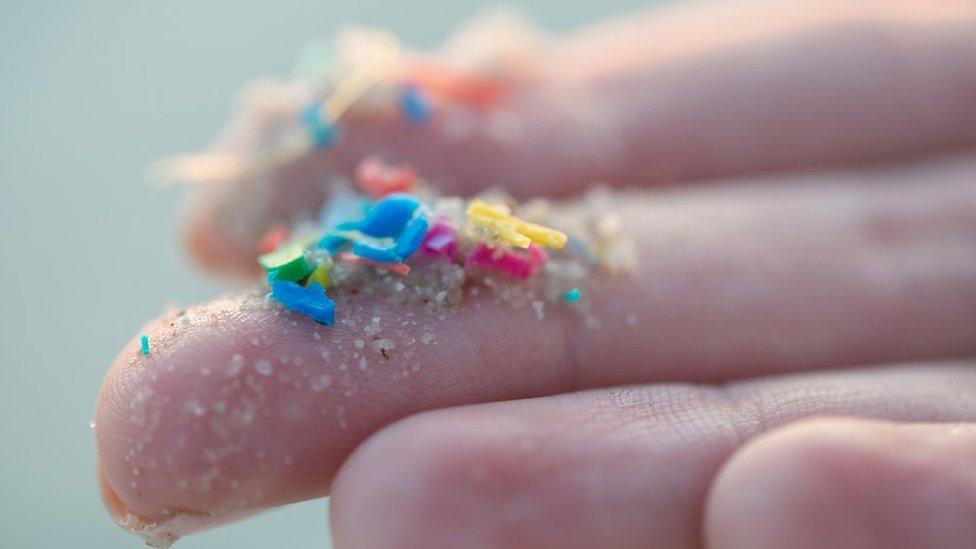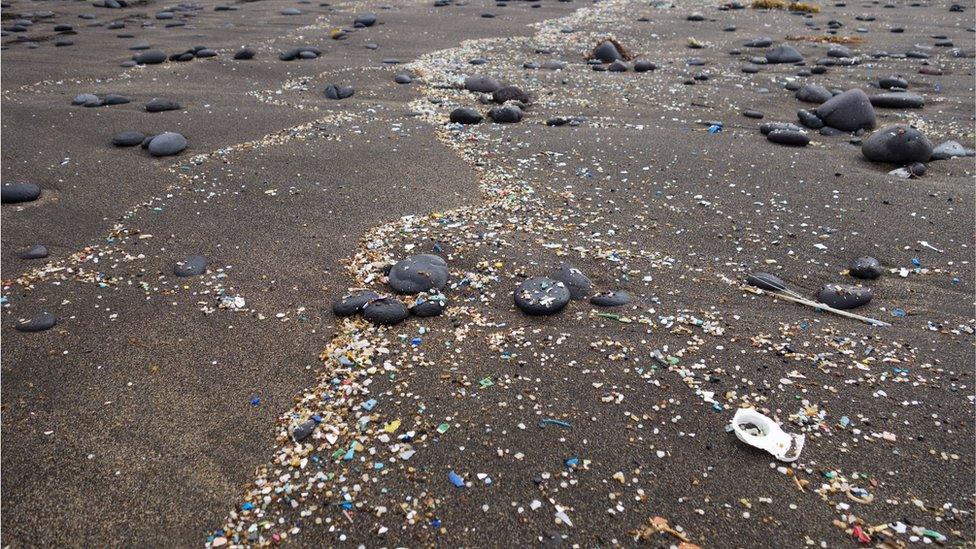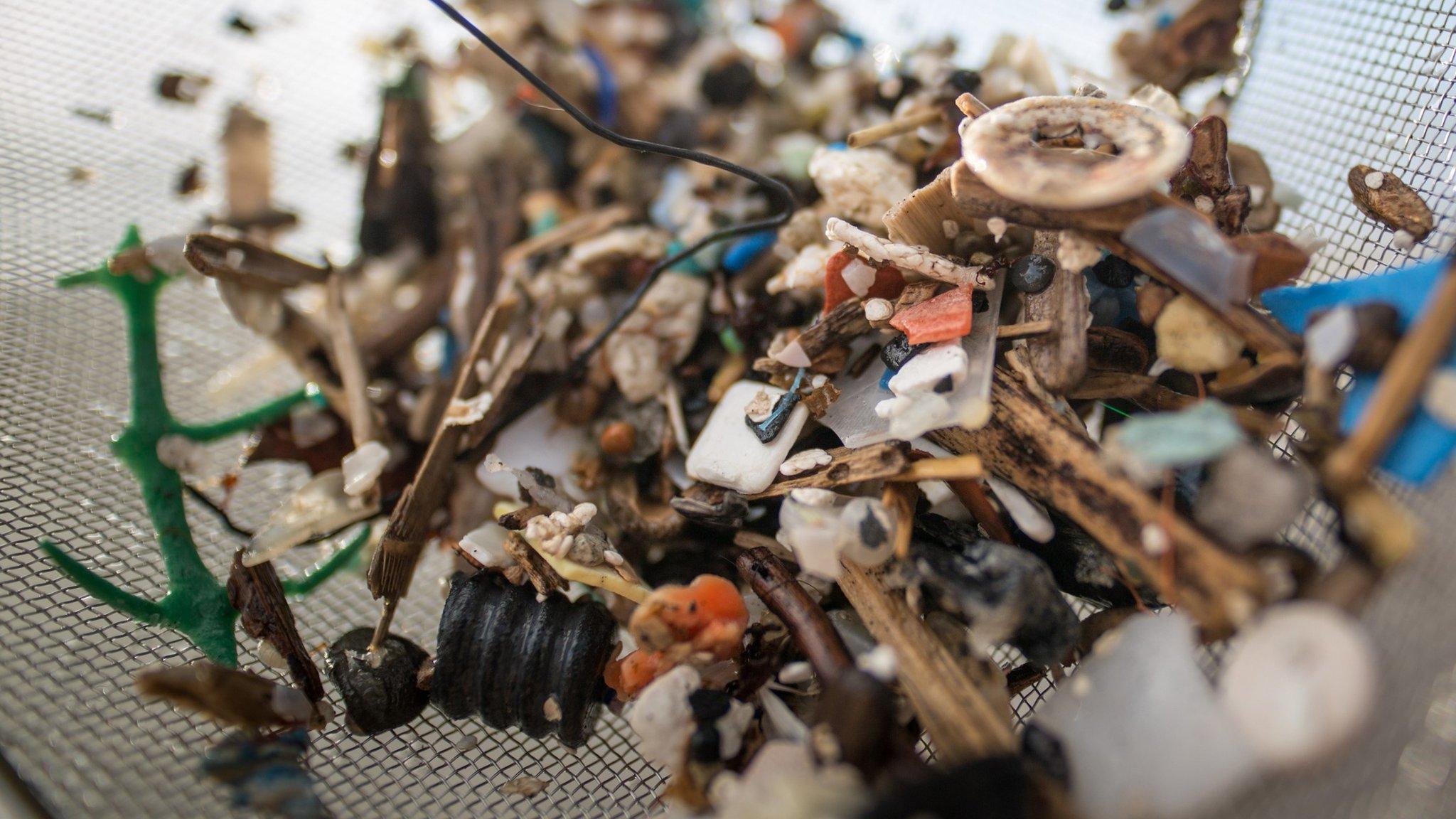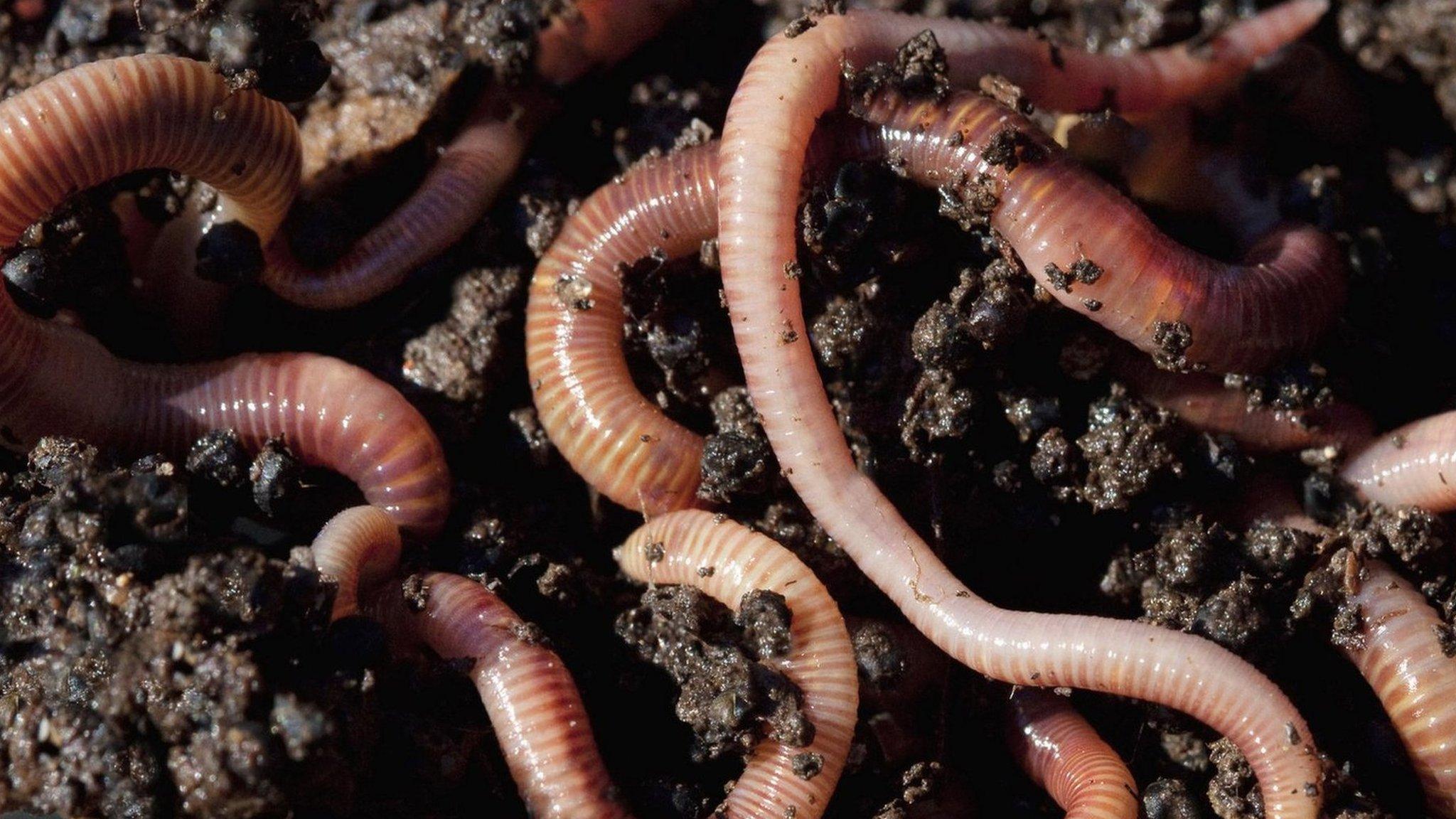Microplastic debris on seabeds has tripled
- Published
- comments

The amount of microplastic debris found at the bottom of the ocean has tripled in the last 20 years.
This is according to a new report by a team of scientists from the Autonomous University of Barcelona (AUB) and Aalborg University.
The researchers looked at samples of the seabed in the north-western area of the Mediterranean sea as part of the study, which is known for being an area that has a lot of pollution.
Researcher Laura Simon-Sánchez said: "Since 2000, the amount of plastic particles deposited on the seafloor has tripled and that, far from decreasing, the accumulation has not stopped growing mimicking the production and global use of these materials."

Researcher Michael Grelaud said that over the last two decades "the accumulation of polyethylene and polypropylene particles from packaging, bottles and food films has increased, as well as polyester from synthetic fibres in clothing fabrics."
The scientists found that per kilogram of seabed sample they studied, around 1.5mg was made up of polyethylene, polypropylene and polyester plastics.
Microplastics are small pieces of plastic that are less than 5mm in length.
Microplastics are created when bigger bits of plastic - such as bottles, bags and containers break down in soil or in the sea and pollute the environment.
Glitter is also a microplastic.
Some plastics are so tiny they can't even be seen with the naked eye. They are called nanoplastics.
Their research also found that, once trapped in the seafloor, the microplastic particles didn't break down, and stayed on the sea floor for decades.
They think this could be due to lack of erosion (grinding down into smaller pieces), oxygen, or light.
"Once deposited, degradation is minimal, so plastics from the 1960s remain on the seabed, leaving the signature of human pollution there," said professor Patrizia Ziveri from AUB University."
If you cannot see the interactive activity on this page, click here.
- Published1 May 2020

- Published4 October 2019

- Published18 August 2019

